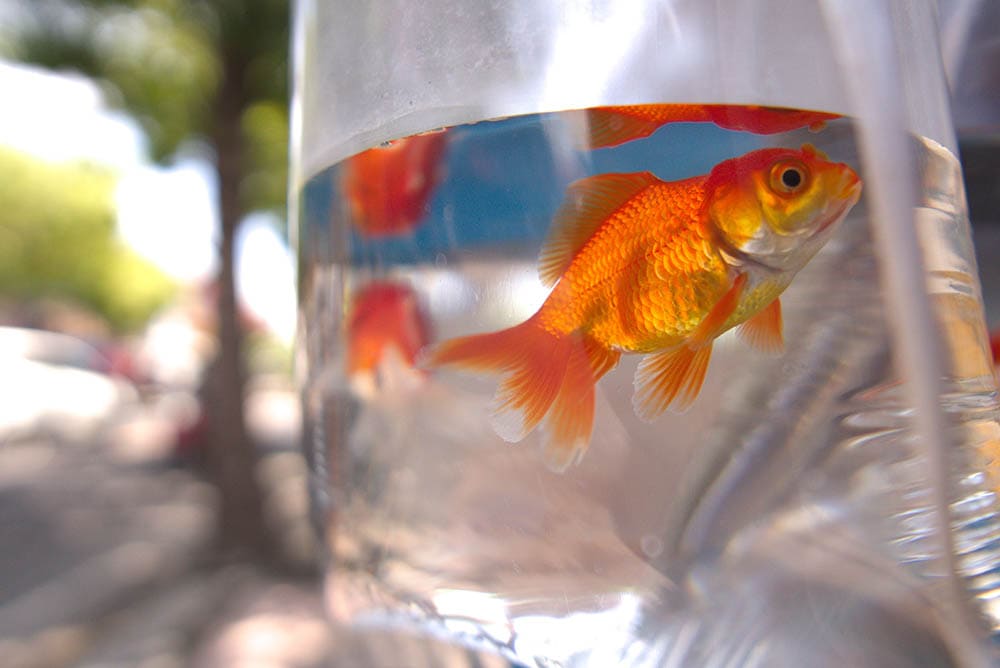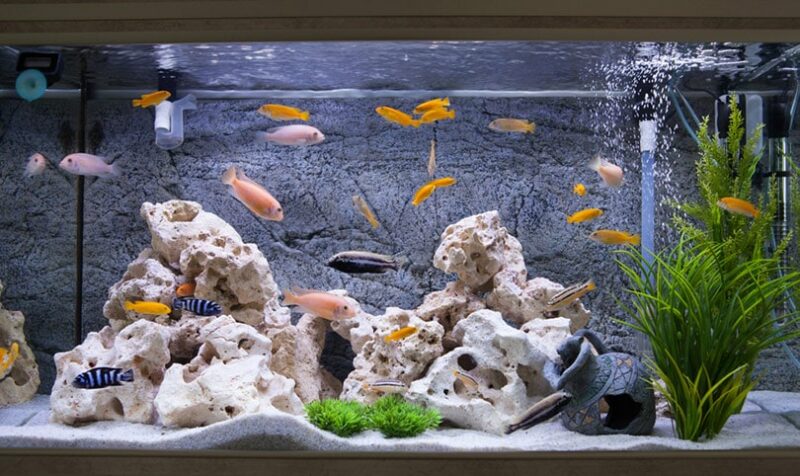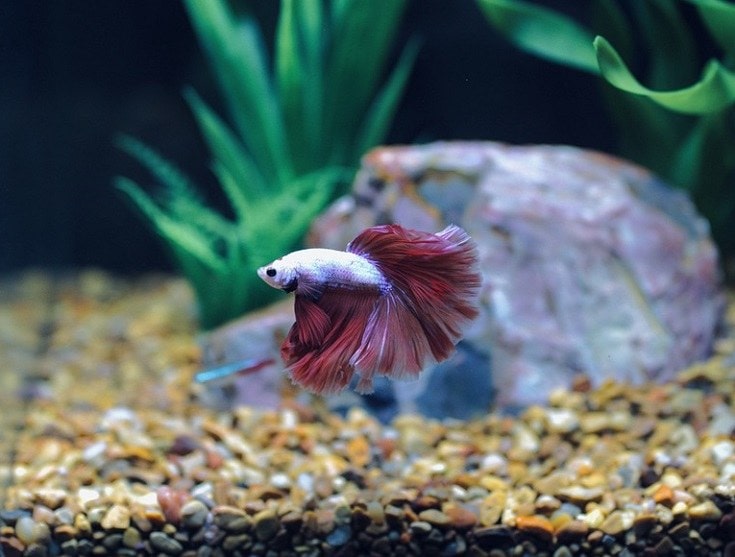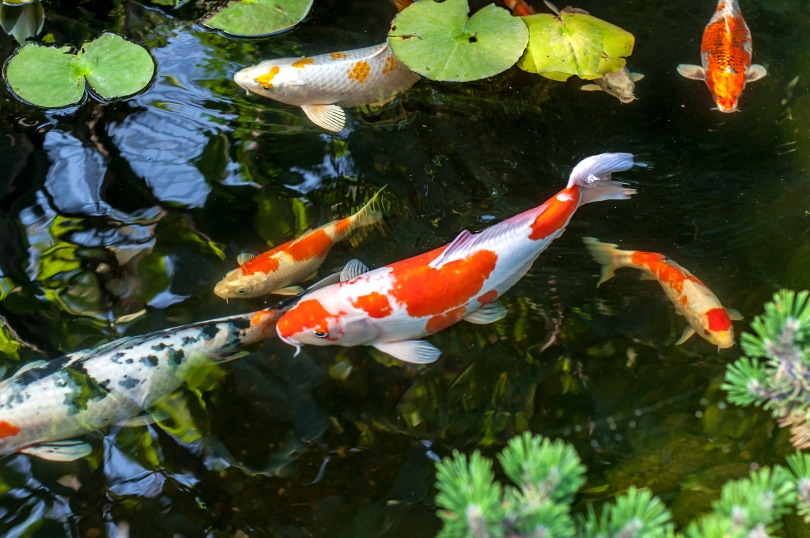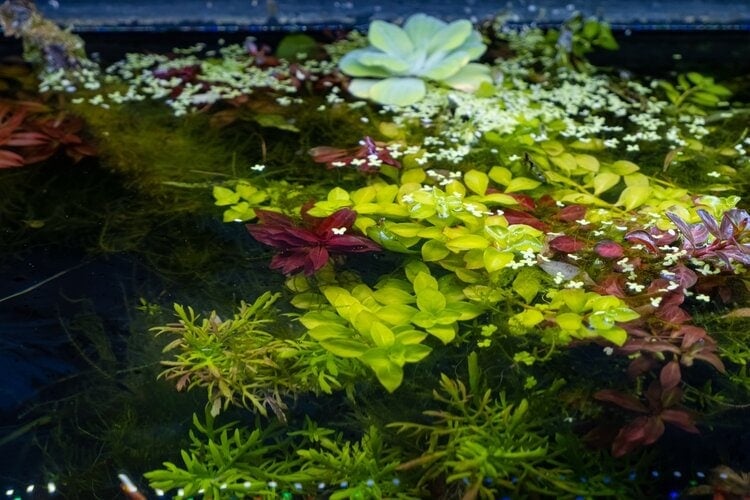
Ludwigia Repens is a flowering plant native to the Americas, where it is used as an ornamental plant that grows best in moist soil. In the wild, Ludwigia Repens grows in moist places such as along rivers and wet habitats. It is a perennial aquatic herb that can now be found in many parts of the world. The root system is extensive and can spread throughout the substrate.
When wet, the leaves change color from green to pink or purple. In the wild, Ludwigia Repens is sometimes called creeping primrose-willow and is an invasive plant that can crowd out other plants in water bodies and wetland systems.1
Although many consider them a weed, in aquariums, Ludwigia plants are attractive and easy to care for, making them a great choice for beginners. These plants grow quickly and produce dense foliage, which makes them effective at filtering the water.

Useful Information About Ludwigia Repens
| Family Name: | Onagraceae |
| Common Name: | Ludwigia Repens, creeping primrose-willow |
| Origin: | The North and Central Americas |
| Color: | Green, rusty red, purple, and pink with yellow flowers |
| Size: | Up to 20 inches |
| Growth Rate: | Fast |
| Care Level: | Easy |
| Lighting: | Lighting at a medium to high intensity (two to four watts per gallon) |
| Water Conditions: | This plant likes soft, mildly acidic water, in the range of pH 6.0 to 8.0 |
| Temperature: | Freshwater, 75–79°F |
| Minimum Tank Size: | 10-gallon |
| Supplements: | Injections of less than 6–14 mg/L of CO2 may help increase growth rate but are not essential |
| Placement: | Background or mid-ground plant |
| Propagation: | Stem cutting above node for propagation |
| Compatibility: | A wide range of aquarium plants |
Ludwigia Repens Appearance
Ludwigia Repens is popular in aquariums due to its bright red leaves. It typically grows in dense clumps and does best in well-lit areas and requires moderate to high levels of light to maintain its color. Ludwigia Repens exhibits a prostrate type of growth pattern, characterized by the plant’s stem slowly creeping along the ground, rooting as it goes, and spreading out into new locations.
The leaves and flowers of the plant grow along the stem with new leaves and flowers appearing as the plant matures. This growth pattern allows the plant to spread quickly and cover a large area. Up to one or two inches long, the leaves are oppositely arranged. If the top part of the plant is not submerged in water, Ludwigia Repens can produce gorgeous yellow flowers just above the water during the warm months of the year. These yellow flowers have four petals that are no longer than ¼ inch long that sit on a base of four-pointed sepals.
Where to Find It?
You can easily buy Ludwigia Repens online from aquatic suppliers. There is one downside to purchasing online, and that is that you are unable to select the plant that looks the healthiest. The good news is that Ludwigia Repens is so sturdy even a less-than-ideal example will survive and thrive once planted.
It is also possible to purchase Ludwigia Repens locally at a good aquarium shop. Depending on the seller, the size and quality of the plant, Ludwigia Repens can cost anywhere from $5 to $15. Whether you buy sight unseen online or pick one out in person, this is an easy-care plant.

General Care
Lighting
Growing Ludwigia Repens requires good aquarium lighting or strong natural light. It must be subjected to high amounts of light to develop its beautiful deep red coloration. Generally, two to four watts of light per gallon is recommended, but your results may vary depending on how deep a red you’d like to achieve. Low light conditions can also support these plants, but the leaves will retain a green color, and their growth will be more stunted.
Water Temperature & pH
Ludwigia Repens grows in a wide range of temperatures but thrives best at 75–79°F. Since this plant is more commonly found in warm and tropical regions, low temperatures are not recommended, although if there is no alternative, these plants will adapt. This plant does better in slightly acidic water with a pH level of 6.0 to 8.0. Because Ludwigia Repens is not extremely sensitive to the chemistry of the water in which they live, and they can live in soft or hard water, tank mates can be selected from a variety of pH levels.
Maintenance
This plant does not have a high sensitivity to the water conditions in which it lives; however, it is highly sensitive to changes in its environment. It is imperative to not change the temperature or pH level once the plant has adapted to it and to maintain these conditions as much as possible. Keeping the tank water in ideal condition requires frequent tank cleanings and partial water changes since organic compounds created by the plants themselves can lower the pH level in the tank over time.
Pruning & Propagation
Depending on how much nutrients are present in the water, this plant can grow up to two inches per week and needs to be pruned regularly since it grows so quickly. Plants should be trimmed to ensure they do not take over their habitat. By cutting back the stems, you can easily maintain the size of your Ludwigia Repens plant.
Alternately, Ludwigia Repens can be propagated to increase their size. A simple way to do this is simply to cut the plant stem at a node and place it in a suitable substrate. Roots will develop and the plant will flourish. Growing several Ludwigia Repens together will make it appear much larger and bushier than having just one.
Tank/Aquarium Size
The ideal aquarium size is at least 10 gallons, though this plant does best in ponds or aquariums where it can grow to its full size. You can maintain Ludwigia Repens’s size by trimming it regularly.
Substrate
To achieve healthy shoots, the substrate needs to be rich in nutrients and high in light intensity. You should use quality aquatic safe soil rather than sand when planting Ludwigia Repens in a substrate. The Ludwigia Repens roots are prone to suffocating on sandy substrates and need ample space to breathe, so any medium or large substrate can be used for planting.
Filtration
Despite its ability to absorb nitrate, Ludwigia Repens still needs some external filtration in order to prevent it from becoming contaminated with toxins that can burn the plant. Standard filters with an aeration system are adequate for substantial plant growth.
Other Plants in the Tank
Ludwigia Repens can be planted with other varieties of low-growing plants although is more likely to compete with other plants for nutrients and light the larger it grows.
Planting Tips
This amphibious plant has the unique feature of being able to grow submerged or emersed. A Ludwigia Repens submerged in an aquascape is commonly placed towards the back of the tank due to its large size and rapid growth.

The 5 Benefits of Having Ludwigia Repens in Your Aquarium
The 2 Concerns About Ludwigia Repens

Final Thoughts
In conclusion, Ludwigia Repens is a great plant for an aquarium. It is easy to care for, helps purify the water, can be used to create beautiful underwater landscapes, and adds a splash of color to any tank. It is a good choice for both new and experienced aquarists.
Featured Image Credit: Aleron Val, Shutterstock

